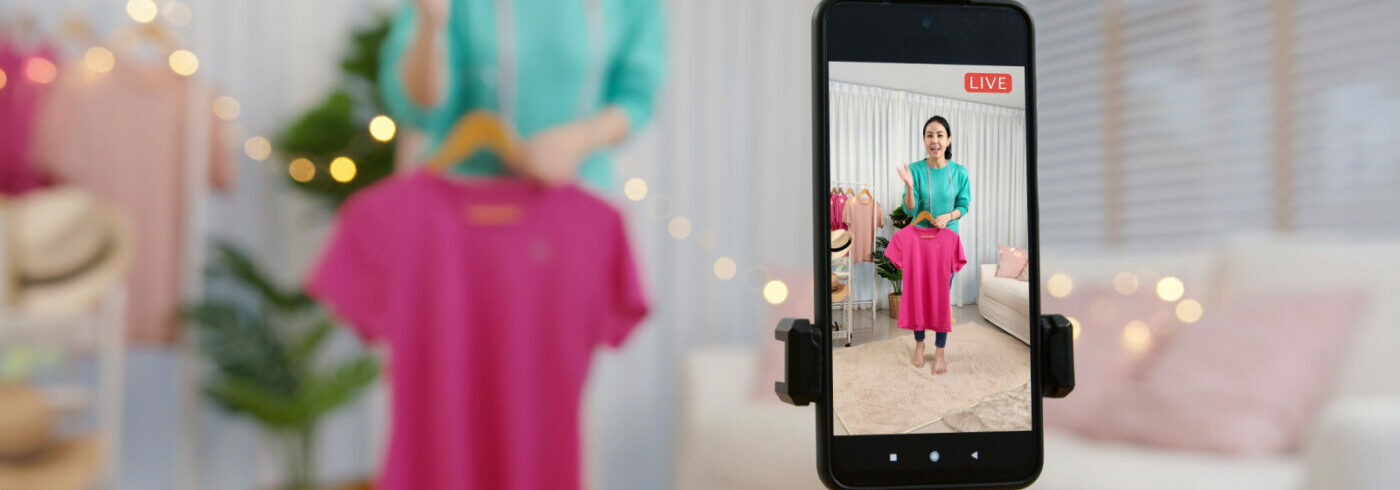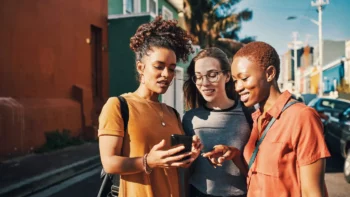
Engaging Gen Z With Creator Marketing
Article Highlights
- Using creators to reach Gen Z
- The solution? Creator marketing.
- TikTok and creator marketing
- Why brands should use TikTok Shop, according to the experts...
- How can brands get it right on TikTok shop?
- What is the best performing style of content for TikTok shop?
- Finally, TikTok shop is a rewarding experience for the creator and the brand
Be the first to access new posts and exclusive content
Creator marketing isn’t anything new for brands, but doing it successfully is becoming increasingly challenging. The landscape is vast, ever-changing, and, (dare we say it) a little oversaturated.
Last month, we got industry experts together for our annual event, YMS London. Head of Influencer Marketing Ruby Soave joined Alice Worley, Creator Agency Partnerships Lead at TikTok to discover how strategic partnerships between brands and creators can be formed to create maximum impact.
In this blog, we’ll share top tips from the session, as well as advice on how brands can use these new innovations to authentically connect with Gen Z.
Using creators to reach Gen Z
Gen Z are digital natives. They’ve grown up in a world inundated with technology, spending much of their time crafting their social presences or scrolling through news feeds. They’re pretty savvy when it comes to this technology, too. In fact, Gen Z are hyper-aware of when they’re being sold to. Cheesy, hard-sells are unlikely to resonate with this group – they want to be entertained and informed.
The solution? Creator marketing.
Creator marketing is pretty simple: it’s any campaign that sees a brand partner with a content creator to drive awareness and engagement for their product. Creators hit the authenticity sweet-spot for Gen Z, with already existing communities and strong online presences. Plus, creators don’t just have followings, they have fully-fledged fan bases. These fan bases admire the creator, and (crucially) respect their opinion. So, when it comes to swaying purchasing power, creators are the golden ticket for brands.
TikTok and creator marketing
TikTok’s personalised algorithms and bite-sized content has got Gen Z hooked. In fact, when we surveyed 1,000 young consumers this year in our Youth Trends Report, TikTok came out as the most favoured social media platform. TikTok has also been a game changer for creator marketing.
Before August 2021, creators would refer to products organically, re-directing viewers to eCommerce sites and local stores. However, TikTok has since launched an integration with Shopify to bring in-app shopping to the platform. This feature lets merchants, brands and creators sell products directly on TikTok. Creators can sell products through in-feed videos and through TikTok livestreams.
Why brands should use TikTok Shop, according to the experts…
TikTok Shop is a powerful marketing tool for brands because it “allows brands to tap into communities”, noted Alice. On TikTok, there’s a community for almost anything; gamergirls, cottagecore, streetwear, mumtok: this app has it all. Brands can leverage these communities by getting involved in the already-existing conversations. For example, a journaling brand may push into #ProductivityTok – or a budgeting app may engage with the #MoneyTok hashtag.
TikTok shopping also has an edge over traditional eCommerce because it’s entertainment-led; something we know to be important to Gen Z. Young consumers gravitate towards immersive experiences – static selling is no longer enough. Our recent research also shows that trust increases in video-based spaces, with 30% of Gen Z trusting TikTok creators more than creators on other platforms.
How can brands get it right on TikTok shop?
Surprise – creators are your key to success here. During the session, Alice noted that choosing your creator isn’t just a one-size-fits-all approach. She remarked that “brands should be open to working with different sorts of creators – don’t be put off by certain looks”. She also noted that some of the most successful partnerships have been when the creator doesn’t fit the exact aesthetic of the brand.
Equally important (but sometimes harder in practice!) is to have a viral product.
One example is Sol De Janeiro’s Brazilian Bum Bum Cream. This product has become a TikTok staple for its intoxicating summer scent and creamy texture. With Barbie Ferreira as the face of the product and a long-running product collaboration with Brazilian artist Anitta, this brand knows the power of association. As a result, it currently has a social reach over 1.8 million, and has amassed a whopping 10 million likes on TikTok.
What is the best performing style of content for TikTok shop?
Did you know the average attention span of a Gen Z is a mere 8 seconds? Yep, you read that right. So, it should be no wonder that short form videos are currently the top source of revenue at the moment, according to Alice. Short-form videos appear in the FYP of users over and over again, creating revenue for a long time after their inception.
However, this isn’t to say that livestreams are totally irrelevant here. Livestreams create a sense of urgency and fulfil that FOMO factor (grab it now before it’s too late!). TikTok livestreams also create more of a connection between the streamer and the user, allowing the creator to interact in real-time and answer any burning questions.
Finally, TikTok shop is a rewarding experience for the creator and the brand
Gen Z, much like the rest of the world, are living through tough economic times. The creator economy is one subsidy that hasn’t escaped the effect here, too. As Ruby notes, TikTok shopping is a great solution for brands who are cautious about spending, because creators only receive commission for what they sell. Equally, the creator is seeing a direct reward for the great content they’re producing. A win win situation, if you ask us.
Looking to get started with creator marketing? Download our free eCommerce guide today.
P.S, if you missed us at this year’s YMS, don’t fear. You can catch up with all the sessions exclusively on Voxburner+.



